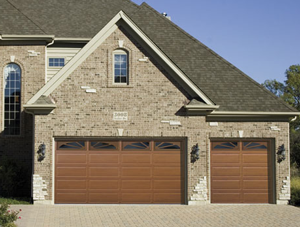
A garage door opener is one of the best gadgets you’ll be able to install in your home. And you’ll be able to install it yourself following these general directions and therefore the specific directions that escort the unit.
The typical garage door opener consists of a reversible motor that drives a carriage on a rail on top of the garage door repair etobicoke . hooked up to the carriage may be a bar to manoeuvre the door between its opened and closed positions, with travel-limiting devices to prevent the door’s movement exactly at the totally opened and totally closed positions. A relay or reversing switch reverses the direction of the drive from gap to closing and back once more. hottest garage door openers embrace a receiver that permits you to open the door by causing a proof from associate degree electronic module in your automotive.
Here’s the way to install a garage door opener:
Step 1: The mechanism ought to be put in the middle of the door. to work out the situation, use a measuring device to work the dimension of the garage door. [*fr1] this distance is that the center. On the within of the door, toward the highest, draw a brief vertical line down the middle of the door. once you affix the bar (the mechanism for raising and lowering the door) at this line, the door weight is going to be equally balanced at the lifting purpose.

Step 2: Raise and lower the door, perceptive the highest purpose of its travel. Mark this location, as a result, you, need to mount the opener so that the rail is above the height of the door’s travel. Otherwise, because the door opens, it may strike the rail.
Step 3: examine the world right on top of the garage door at your vertical dividing line; there should be support therein location appropriate for attaching the face of the rail. If your garage lacks support therein location, install a front mounting board. Center and fasten a length of {two} X 6-inch plank firmly with lag screws across two wall studs over your mark of highest door travel. Transfer your high-point mark to the current plank, and extend the vertical door centerline onto the plank similarly.
Step 4: Attach the rail to the motor unit on the garage floor, following the procedure printed within the kit directions. With the garage door down, carry and fasten the outer finish of the rail to the front mounting plank at a location concerning 2 inches on top of the intersectant marks you created for your door’s part and centerline. The rail bracket provided for this purpose sometimes fastens to the front mounting plank with lag screws. If bolts and whacky area unit are provided, however, you need to drill appropriate holes through the front mounting plank. take care to use washers below the heads of the bolts to stay them from pressing into the wood.
Step 5: Raise the motor assembly to the purpose wherever the rail is horizontal, or parallel with the door track. With the motor assembly command or supported during this position, raise and lower the garage door by hand to take care that the rail location doesn’t interfere with the door’s movement. Once you determine the proper position and height for the motor assembly, fasten it to the garage joists with the metal brackets within the kit. If the position of the motor assembly is between 2 joists, or if the garage joists run an equivalent direction because of the rail, you will need to lock a length of two X four across the joists, and so mount the brackets to the two X four. If your garage ceiling is finished, you’ll be able to mount a 3/4-inch plyboard panel overhead, fastening it to the joists with lag screws. Attach the mounting hardware to the plyboard panel with heavy-duty toggle bolts.
Step 6: Attach the bar to the rail carriage, and move the carriage to its private position. Mark the bar mounting-screw holes on the garage door, and drill the holes within the door. With the bar-mounted and therefore the holes trained, insert and tighten the attaching hardware that fastens the bar to the door.
Step 7: create all the required changes to the drive chain or lead screw, perceptive significantly the situation of the bolts that limit the chain’s travel.


